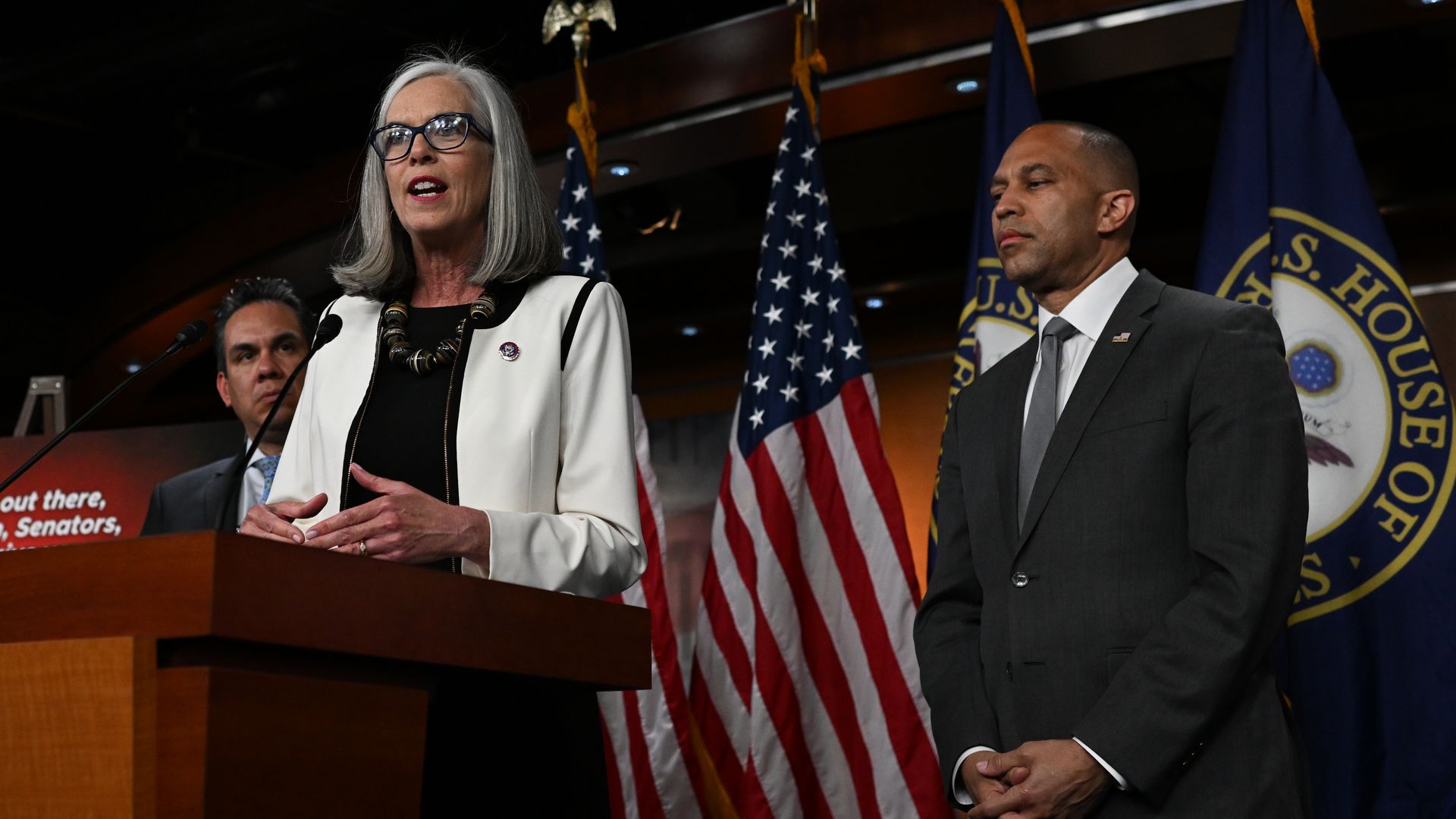

Opinion Editorial: Unraveling the Legal Labyrinth of the “Pastor Bill” Murder Case
The case involving the murder of William Schonemann—affectionately known as “Pastor Bill” in New River—is a striking example of how tangled legal issues and cross-jurisdictional challenges can turn a criminal investigation into a puzzle of nerve-racking proportions. With the recent identification and arrest of 50-year-old Adam Sheafe, many are left grappling with how law enforcement and the justice system manage cases that cross county and state lines while simultaneously stirring up community unrest and deep-seated questions about targeted crimes.
This editorial takes a closer look at the case, analyzing the twists and turns of the investigation, the legal responsibilities of varied jurisdictions, and the overarching concerns of community safety. By going into the hidden complexities of the investigation and weighing the legal consequences for someone with a long history of criminal behavior, we can get a better sense of the broader impact on our legal landscape.
Examining the Legal Implications of Cross-County Investigations
One of the most complicated pieces of this case is the fact that the suspect’s actions spanned several counties—Coconino, Maricopa, and even Sedona and Yavapai. Managing your way through this multi-county investigation requires not only robust state laws but also a finely coordinated effort by law enforcement agencies, bridging the gaps between local and federal jurisdictions.
When crimes are carried out across multiple areas, the legal system is forced to contend with conflicting procedures, differences in local laws, and the challenges of data-sharing. The aftermath of these crimes often leaves many community members frustrated, as they watch various agencies work on pieces of a bigger puzzle.
What lessons can we learn from this situation?
- Enhanced communication between law enforcement agencies is critical.
- Streamlined protocols for evidence sharing can help bridge the gap between jurisdictions.
- Establishing a unified command can reduce the confusion that comes with overlapping responsibilities.
Coordinated Efforts: How Agencies Find Their Way Through the Case
The arrest of Adam Sheafe on April 30 near Gambel Lane, following an exhaustive multi-agency search, illustrates the resilient spirit of law enforcement in our region. Working through the tangled issues presented by inter-county investigations, Sedona Police Department and Yavapai County deputies managed to piece together clues linking Sheafe to both the New River Bible Chapel and a series of related crimes across Sedona.
By coordinating their efforts, these agencies managed not only to pinpoint Sheafe’s whereabouts but also to gather vital pieces of evidence linking him to multiple offenses. The process, although overwhelming for the agencies in question, underscores the essential need for cooperation among different branches of the law. Details like the vehicle theft and evidence recovered from the stolen car are prime examples of how combined efforts can unearth the subtle details that might otherwise be missed.
This kind of cooperation serves as a case study for the importance of:
- Joint task forces operating across jurisdictional lines
- Real-time data sharing to connect disparate events in a cohesive timeline
- Utilizing technology—such as surveillance systems and advanced forensic tools—to aid in finding your way around complicated cases
Timeline of Events: Navigating the Nitty-Gritty Details
| Date | Incident |
|---|---|
| April 27 | William Schonemann, known as “Pastor Bill,” was last seen alive. |
| April 28 | A welfare check was performed at Schonemann’s home near 20th Street and Calvary Road where he was found deceased. |
| Late April | A community member observed Adam Sheafe acting suspiciously near the New River Bible Chapel. |
| April 29 | Series of crimes reported in Sedona, including burglary, unlawful flight from law enforcement, and a vehicle hit-and-run. |
| April 30 | Following mounting evidence and an extensive search, Sheafe was apprehended near Gambel Lane. |
By organizing the details in a timeline, we can better appreciate how evidence collected during different phases converges to paint the picture of how events unfolded and how the investigation gradually found its way to the suspect.
Legal Challenges in Cases Involving Religious and Random Targets
One of the most nerve-racking aspects of this investigation is the reported claim that the crime was religious in nature and led to multiple planned targets. The fact that the victim was a respected member of the local religious community after being associated with the New River Bible Chapel adds layers of tension to an already volatile situation.
Critically examining the legal ramifications, it becomes evident that:
- Investigators must distinguish between crimes motivated by religious ideology versus those committed randomly.
- The evidence must be scrutinized to ensure the motive is accurately identified, which is challenging when subtle details can be easily misinterpreted.
- Court proceedings could become even more complicated if potential hate crime charges or terrorism-related issues are considered.
These legal twists necessitate that jurors, lawyers, and judges alike get into the fine points of motive, evidence integrity, and the broader social context. As we dig into the issue, it is important to acknowledge that every case carries its own set of challenges. In this instance, ensuring the safety of potential additional victims is just as critical as securing a conviction against an individual with a notorious past.
Understanding the Role of Past Criminal Behavior in the Legal Process
Adam Sheafe’s extensive criminal record, which includes charges related to domestic violence, bank fraud, and identity theft, adds another layer of legal complexity—one that the judicial process must carefully weigh. His previous convictions in states like Arizona, Nevada, and California create a significant profile that can influence sentencing and negotiations. Yet, as is often the case in legal proceedings, past behavior must be balanced against the specific circumstances of the current investigation.
Examining the legal aspects further, consider the following points:
- How does a previous criminal history factor in during federal and state court proceedings?
- What are the implications for potential reformation efforts versus punishment?
- Could a pattern of crimes ever be intended as a part of a broader plan, or are they simply random acts influenced by a mix of psychological and behavioral issues?
The answers to these questions are rarely straightforward. Instead, they require a delicate balancing act by prosecutors who must ensure that justice is served without tipping into overly harsh punitive measures that could backfire in public opinion. Also, further debates may arise regarding the efficacy of early release programs for individuals with serious criminal records—especially when such releases precede new, dangerous offenses.
Interagency Collaboration: The Backbone of a Successful Investigation
Given the tense and multi-faceted nature of this case, the collaborative efforts between various law enforcement agencies have proven to be super important. From the Maricopa County Sheriff’s Office to Sedona PD and Yavapai County deputies, the investigation exemplifies how interagency cooperation can lead to breakthroughs in nerve-wracking criminal cases.
Key aspects of successful collaboration include:
- Sharing of intelligence regarding suspicious behavior and emerging evidence.
- Coordinating resources to cover wider geographic areas efficiently.
- Utilizing combined expertise in forensic analysis to link seemingly unrelated crimes.
Bringing together multiple perspectives can sometimes be the only way to figure a path through a maze of complicated pieces of evidence spread over different regions. This partnership between agencies not only reinforces public confidence in the justice system but also highlights the need for continued investment in joint training and modern investigative tools.
The Impact on the Community: A Closer Look at Social Repercussions
This case has not just legal and procedural ramifications—it has a lasting impact on the local community. Residents in New River and surrounding areas are likely to feel overwhelmed by the sudden realization that crimes of this magnitude can occur in what many believed to be a safe environment.
Understanding the human factor in such high-profile cases is key. Many community members are now questioning whether law enforcement—and by extension the legal system—are doing enough to safeguard vulnerable populations, especially in areas where religious communities are targeted. The following points underscore the community’s voice:
- Heightened awareness of potential cultural and religious discrimination in criminal acts.
- An increased call for transparency and accountability in the investigation process.
- A desire for more proactive community policing measures to prevent further criminal activities.
The community’s reaction is a reminder that legal investigations go hand in hand with social trust. When citizens feel left in the dark, it can lead to diminished confidence in the justice system, driving the need for improvements in information dissemination and proactive reporting.
Balancing the Scales of Justice Amid Uncertainty
As we take a closer look at this case, it is clear that balancing the scales of justice is more than just a legal challenge—it is a matter of public trust and safety. The fact that Sheafe is already in custody in Coconino County while the process to extradite him to Maricopa County is ongoing underscores the complex government mechanism behind detaining and prosecuting suspects across regional lines.
Certainly, the public expects a transparent process that does not sacrifice due process in the haste to secure a conviction. The following are key small distinctions that legal experts highlight when balancing the scales of justice in such cases:
- Evidence Integrity: Ensuring that every piece of evidence is gathered according to legal protocols, no matter how overwhelming the public pressure might be.
- Fair Trial Rights: Even with a notorious criminal record, every suspect is entitled to a fair and unbiased trial.
- Interagency Protocols: Overcoming the challenges posed by inter-county jurisdiction requires a framework that respects both local legal issues and larger, coordinated efforts.
Critics of the process argue that sometimes the system seems loaded with problems, delaying justice and placing more victims at risk. In contrast, supporters stress the necessity of adhering strictly to legal standards regardless of the public outcry. The tug-of-war between these stances often makes the trial process a nerve-wracking affair for all involved.
Legal Precedents and the Way Forward in Multi-Jurisdictional Cases
The “Pastor Bill” case serves as a modern-day example of how legal precedents are set in scenarios where crimes cross traditional boundaries. Historically, cases involving cross-border crime have forced legislatures to reevaluate the legal framework governing interagency coordination and evidence handling. Observers note that the way this case is handled could set the tone for future investigations in our region.
Looking back at previous high-profile cases, several key themes emerge:
- Interagency Legal Protocols: Past cases have led to the implementation of more rigorous protocols aimed at ensuring seamless cooperation.
- Evidentiary Regulations: Adjustments in what constitutes admissible evidence have become super important, especially when it spans multiple jurisdictions.
- Public Policy Revisions: High-profile investigations often pave the way for legislative reforms intended to improve law enforcement responses to similar crimes in the future.
Despite these improvements, every case still presents its own set of twisted challenges. The legal community is tasked with sifting through both compelling evidence and minute details, working to make your way through a maze that may be as intimidating as it is necessary. There is a continuous debate over whether reforms should also extend to public communication strategies, ensuring that the community is informed without compromising legal proceedings.
Ethical Considerations in Handling Sensitive Criminal Cases
Beyond the legal intricacies, this case also raises several ethical questions. For instance, when dealing with crimes that potentially target religious communities or involve random acts of violence, ethical considerations come sharply into focus. The community’s trust is at stake even as officials work through the challenging parts of building a case.
Key ethical considerations include:
- Responsibility to Potential Victims: Law enforcement must balance the urgency of protecting additional victims with ensuring that every step in the legal process is justified by strong evidence.
- Media Sensitivity: With high-profile names such as “Pastor Bill” attached to the case, the media can sometimes play a role in shaping public perception. This makes it crucial for the press to report responsibly by focusing on factual and verifiable information.
- Rights of the Suspect: Despite a criminal record, suspects are entitled to fair treatment under the law. This is a core principle that must remain intact even amid community pressure for quick justice.
The ethical scenarios encountered in cases like these are riddled with tension, as decision-makers must continuously weigh the need for swift action against the imperatives of due process and fairness.
The Burden of Historical Patterns: Recurring Failures and Opportunities for Reform
It is significant to note that Adam Sheafe’s criminal history is not a new chapter in a long series of troubling stories involving recidivist offenders. His long list of previous convictions—a pattern that spans domestic violence, bank fraud, and identity theft—raises questions about the rehabilitation programs in place and how the system deals with repeat offenders.
The legal community is split on how best to address this recurring problem:
- Some argue that harsher sentences or longer periods of incarceration are necessary to keep repeat offenders off the streets.
- Others contend that more focus should be placed on rehabilitation programs that address the root causes of criminal behavior.
- A hybrid approach may be needed, one that combines strict punitive measures with targeted intervention programs designed to prevent future offenses.
A table summarizing these arguments might help clarify the different perspectives:
| Approach | Advantages | Challenges |
|---|---|---|
| Harsher Sentences | Deterrence, public safety | Risk of overcrowded prisons, potential for unjust punishment |
| Rehabilitation Programs | Addresses root causes, reduces recidivism | Takes time to implement, may not suit all offenders |
| Hybrid Approach | Balances punishment and reform | Complex to administer, requires coordinated legal strategy |
This case forces us to ask if there is a need for reform in how repeat offenders are managed. With a system already struggling to steer through the competing expectations of punishment and rehabilitation, every new case becomes an opportunity to reassess the current state of legal practices and ethics.
Community Trust and the Judicial Process in a Time of Crisis
Trust in the judicial system is essential if communities are to feel safe and secure. When high-profile cases like this come to light, the community is often forced to confront the fact that sometimes justice appears delayed or mired in legal technicalities. The “Pastor Bill” case has unearthed many of these nerve-wracking questions about whether every crime can be adequately addressed without compromising the rigid frameworks that protect against miscarriages of justice.
In the wake of the arrest and ongoing legal maneuvers, community members are seeking reassurance, transparency, and a commitment to handling every case with the utmost care for both victims and suspects. Here are some measures that could help bolster public trust:
- Regular updates from law enforcement that explain both the progress and challenges of the case.
- Forums where community members can ask questions and express concerns in a controlled environment.
- Independent oversight committees that review high-profile cases to ensure accountability and transparency.
These initiatives are not just buzzwords—they represent genuine attempts to mend the delicate relationship between the community and the legal apparatus. By addressing the concerns of the public openly, authorities can find their way back to a basis of trust that is essential for community safety.
Media Influence and the Shaping of Public Perception
The role that media outlets play in high-profile cases should not be underestimated. In an era where stories spread quickly through social media and news websites, the narrative around the “Pastor Bill” case is being shaped continuously as new details emerge. A balanced media approach is required to avoid sensationalism, which can sometimes interfere with the legal process.
Important points to consider regarding media influence include:
- Media outlets must work on reporting factual information without infusing bias.
- Commentary and opinion pieces should clarify the legal nuances, ensuring that the public is not unduly influenced by unverified information.
- Transparent relationships between law enforcement and media can help prevent the spread of misinformation, ensuring that the judicial process remains fair.
A clear separation between reporting news and editorializing is critical. In doing so, media organizations can contribute to a community understanding that while the legal process might be slow and prone to the occasional twist and turn, each step is being taken with the intent of upholding justice.
Lessons Learned: How This Case Could Influence Future Legal Reforms
The unfolding events in the “Pastor Bill” case offer a unique opportunity to reflect on what could be improved in the legal system. Here are a few key takeaways that might influence future reforms:
- Interagency Cooperation: This case underscores just how critical it is for multiple agencies to work in sync, especially when the crime crosses several jurisdictions.
- Efficiency in Evidence Processing: The importance of quickly and accurately gathering evidence—even from seemingly unrelated crime scenes—cannot be overstated.
- Balancing Public Pressure with Fair Trials: Ensuring that justice is both served and seen to be served requires a delicate balance, particularly in emotionally charged cases.
In light of the legal battles and ethical dilemmas presented by this case, lawmakers might consider measures such as:
- Updating inter-county legal protocols to reflect modern investigative techniques.
- Improving training programs for handling cases with cross-jurisdictional elements.
- Reassessing sentencing guidelines for repeat offenders to better balance rehabilitation with public safety.
The legal community is at a crossroads. On one side lies the traditional process—methodical, perhaps cumbersome, but steadfast in protecting the rights of all parties—and on the other, a new era that demands fast, transparent responses to crimes that shake the very foundations of community trust. Finding your way through this debate is as much an ethical challenge as it is a legal one.
Reflecting on the Broader Societal Impact of Random, Religious-Related Crimes
Beyond the immediate legal questions, there is a broader societal conversation about the targeting of individuals associated with religious communities. While initial investigations suggest that Sheafe’s actions may have been random, authorities also acknowledge the possibility of a religious motive that could have endangered several potential victims.
This dual possibility raises several controversial questions:
- Can a crime, especially one with religious overtones, ever be truly random in its selection of victims?
- To what extent does public perception shape the investigation of crimes that appear to target specific religious communities?
- How do law enforcement officials differentiate between hate crime indicators and random criminal behavior?
Answering these questions not only requires a deep dive into the documented evidence but also a look at historical patterns of religiously motivated crimes. The lessons learned from such cases could serve as the foundation for new policies that protect vulnerable groups without leading to an erosion of constitutional rights.
Considerations for Future Criminal Justice Proceedings in Similar Cases
With the ongoing legal proceedings against Adam Sheafe, legal experts and community leaders alike are keenly watching for any indications that this case might herald new standards in criminal justice. When dealing with a suspect who has a foot in the door of multiple jurisdictions, the following factors could play a critical role in future cases:
- Extradition Protocols: The process of transferring a suspect from one county or state to another must be efficient and uncompromising in its adherence to legal protocols.
- Charge Consolidation: Prosecutors might consider consolidating charges from multiple counties into a single coherent case, ensuring that all facets of the criminal behavior are addressed comprehensively.
- Preventing Further Crimes: Intelligence sharing between jurisdictions needs to extend beyond resolving the current incident—it should serve as a preventive mechanism to stop further crimes before they occur.
The legal framework in cases like these is constantly shifting to meet the demands of both public safety and due process. As we witness the evolution of these protocols firsthand, one can only hope that the lessons learned will improve our overall approach to justice in a multi-jurisdictional context.
Final Thoughts: Ensuring Justice Amid the Tangled Issues of Modern Investigations
As the investigation into “Pastor Bill’s” murder progresses, the pressing question remains: How will the legal system reconcile the overwhelming evidence with the nuanced, often intimidating, demands of judicial fairness? The arrest of Adam Sheafe marks a significant milestone in a case that is as much about protecting community values as it is about holding an individual accountable for his crimes.
In reflecting on the entire process—from the initial discovery of suspicious behavior near a cherished local chapel to a coordinated cross-county police operation—we see a tapestry of legal twists and subtle details that together form a case riddled with tension and complexity.
Each stage of the investigation offers rich lessons for those within the legal community and for society at large. From efficiency in handling large-scale investigations to the moral and ethical obligations of ensuring fair treatment for all parties involved, this case exemplifies both the challenges and critical must-haves of modern criminal justice.
The road ahead may be riddled with further legal debates, public outcries, and calls for procedural reform. However, if this case teaches us anything, it is that even in the midst of nerve-wracking legal battles and overwhelming public pressure, finding your way through the maze of justice is possible with dedication, interagency cooperation, and a commitment to transparency.
Ultimately, the “Pastor Bill” murder case serves as both a cautionary tale and a call to action—a reminder that the legal system must continuously evolve to protect marginalized communities, safeguard public trust, and ensure that every suspect’s rights are preserved even as we work to bring closure to distressed communities.
As we await further developments, it is incumbent upon legislators, law enforcement, and community leaders to use this case as a springboard for reform—addressing every tangled issue, every nerve-wracking twist, and every subtle detail with a clear-eyed focus on justice. In doing so, we honor the memory of those lost and reaffirm our collective commitment to a fair legal system in a landscape that is as challenging as it is ever-changing.
Originally Post From https://www.abc15.com/news/local-news/soon-mcso-to-provide-update-on-pastor-bill-murder-investigation-in-new-river
Read more about this topic at
Murder suspect apprehended at local gas station
Murder Suspect Apprehended in Belton


